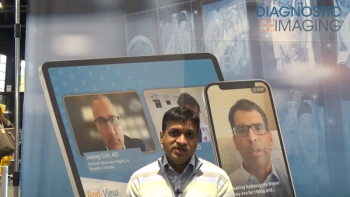
Philips CEO details strategy in struggle to win market share
New CEO views U.S. as critical turfThe integration at Philips Medical Solutions is done. Research and design and marketing and sales have closed ranks, joining best-of-breed technologies into a cohesive blend of offerings,
New CEO views U.S. as critical turf
The integration at Philips Medical Solutions is done. Research and design and marketing and sales have closed ranks, joining best-of-breed technologies into a cohesive blend of offerings, according to the company's chief executive, Jouko Karvinen. The glue that keeps it all together is a sincere and deep passion for clinical applications.
"We try to understand the good that comes from our products," he said. "What good they do for doctors and, more important, for patients."
Karvinen has been at the helm of Philips Medical for just over half a year, replacing Hans Barella as president and CEO on Oct. 1, 2002. Partnering with customers is the key to his strategy today, just as it was when he ran the automation technology products division of ABB Group in Zurich, Switzerland, before joining Philips.
Only by understanding the needs of customers can a company meet them, he said. And Philips competitors tend not to do this.
"I was speaking to one person at a university and he told me, 'Everybody is saying they have solutions for me, but nobody is asking me about my problems,'" Karvinen said. "I think there is a lot of truth there."
While serving as executive vice president of the ABB Group, Karvinen was under intense pressure to meet customer needs. The average life cycle of automation equipment is 18 months. By comparison, meeting the needs of customers accustomed to a five to seven-year equipment life cycle should be a breeze. But Karvinen doesn't see it that way. He is on the road 80% of his time, talking to physicians, pitching deals to administrators, mingling at trade shows.
He refers to Philips' staff as "troops," the fight for market share as a "war." To Karvinen, the U.S. is critical turf.
"We cannot win the world without this country," he said. "We have to win here, because the U.S. is the leading market in the world. That is one of the reasons we put world headquarters in the U.S. The other is that half of my researchers are here."
Establishing partnerships with luminaries is essential in the race to develop new and better Philips technology, he said. But developing the best MR or CT, x-ray, nuc med, or ultrasound system will get the company only so far.
"We are not going to win this war based on modality technologies," he said. "You can take a step ahead of the competition and gain an edge, but you will not take over the world with it."
Applications areas, such as women's health, are drawing in multiple modalities. In two or maybe three years, modality technologies will be the entry requirement to compete for sales based on applications, according to Karvinen. For Philips to succeed, technology must be translated into clinical applications and, ultimately, into workflow improvements.
Winning sales in the future, as now, will depend on forging strong relationships with customers. Physicians will be the backbone of those relationships. But nonmedical decision-makers must also be involved. And Philips will reach out to the patient as well, as part of a multilayer relationship with the imaging community, he said.
"More and more in the future patients will have a say in how they are medically treated," he said. "In the U.S. they have a lot to say now, and in the future, they will have even more."
Newsletter
Stay at the forefront of radiology with the Diagnostic Imaging newsletter, delivering the latest news, clinical insights, and imaging advancements for today’s radiologists.



























